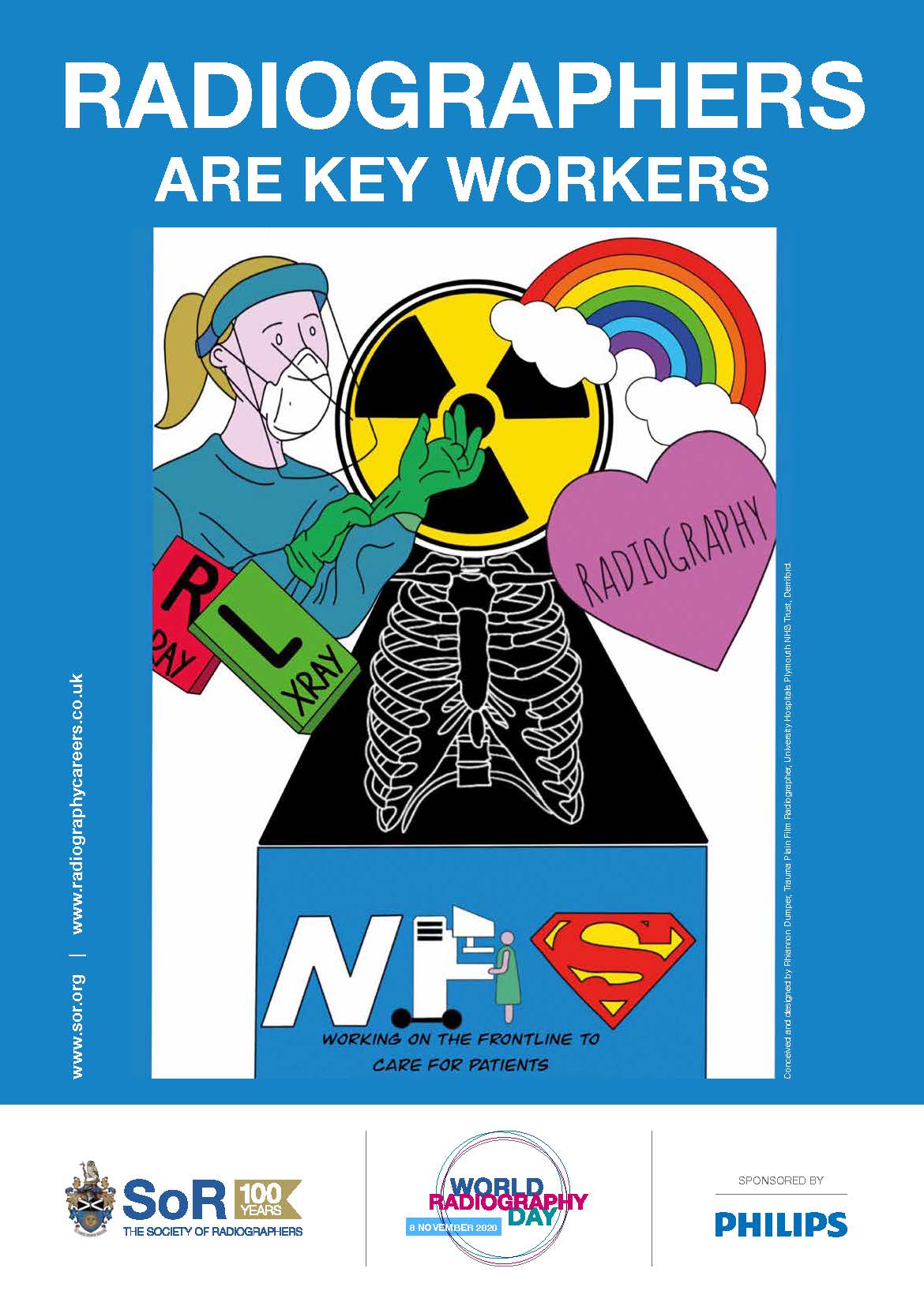

World Radiography Day, observed on November 8, commemorates the discovery of X-rays and the significant impact it has had on the field of medicine. This year's theme "Radiographers: Seeing the Unseen" highlights the crucial role of radiographers in identifying hidden health issues through imaging technology. The day also recognizes the dedicated efforts of radiographers and radiologists worldwide in diagnosing and treating medical conditions. The first World Radiography Day was celebrated in 2007 and marked the anniversary of Professor Wilhelm Conrad Roentgen's groundbreaking discovery of X-rays in 1895.
World Radiography Day: A Celebration of the Discovery and Impact of X-Rays
Background:
World Radiography Day is observed annually on November 8th to commemorate the discovery of X-rays by Professor Wilhelm Conrad Roentgen in 1895. Roentgen's groundbreaking discovery marked a significant turning point in the field of medicine, revolutionizing diagnosis and treatment of medical conditions.
Significance:
X-ray imaging, also known as radiography, has had a profound impact on healthcare. It allows physicians to see inside the human body without invasive procedures, enabling them to diagnose and treat diseases more accurately and effectively. Radiographers, the professionals who perform and interpret X-rays, play a crucial role in this process.
2023 Theme: "Radiographers: Seeing the Unseen"
This year's theme, "Radiographers: Seeing the Unseen," highlights the vital role of radiographers in identifying hidden health issues through imaging technology. They use a variety of advanced imaging techniques, including X-rays, MRI, and CT scans, to detect and monitor diseases in various parts of the body.
Top 5 FAQs and Answers:
1. What is the purpose of World Radiography Day? Answer: To recognize the discovery of X-rays and the important contributions of radiographers to healthcare.
2. When was the first World Radiography Day celebrated? Answer: 2007
3. Who discovered X-rays? Answer: Professor Wilhelm Conrad Roentgen
4. How do radiographers contribute to healthcare? Answer: By performing and interpreting X-rays and other imaging tests, enabling physicians to diagnose and treat medical conditions accurately.
5. What are some future advancements expected in radiography? Answer: Continued development of advanced imaging technologies, such as artificial intelligence and cloud-based systems, to enhance diagnostic capabilities and improve patient outcomes.

Prime Minister Narendra Modi launched a groundbreaking research, development and innovation scheme that will provide a boost to the flourishing ecosystem of innovation in India. In his address at the Emerging Science, Technology and Innovation Conclave, PM Modi highlighted the crucial role of science and technology in driving transformation and emphasized on India's significant progress in the field. He also acknowledged the remarkable achievement of India's women's cricket team and expressed confidence that their success would inspire the country's youth. Attendees included renowned scientists, innovators, and distinguished guests from both India and abroad.

Indian Prime Minister Narendra Modi inaugurated the Emerging Science and Technology Innovation Conclave (ESTIC) 2025 and launched the Rs 1 lakh crore Research Development and Innovation (RDI) Scheme Fund. The scheme aims to strengthen the private sector-driven research and innovation ecosystem in the country and has a total outlay of Rs 1 lakh crore over 6 years. ESTIC 2025, gathering over 3,000 participants, focuses on 11 critical thematic areas including Artificial Intelligence, Quantum Science and Technology, and Space Technologies, providing opportunities for collaboration and reinforcing India’s science and technology ecosystem.

In this edition of Health360, a renewed debate over the alleged link between vaccines and autism is sparked by tech mogul Sridhar Vembu's endorsement of a questionable study. Despite reassurances from the medical community backed by data from the WHO, doubts continue to persist, leading to potential harm to public health. The program also delves into the alarming rise in back pain cases in India and explores new treatments.

In an effort to fight the ongoing air pollution crisis, Delhi conducted its first-ever official cloud seeding operation led by IIT Kanpur. The operation involved a small aircraft dispersing specially designed chemical flares into the atmosphere to create rain. While experts say rainfall could occur within 15 minutes to 4 hours, the actual timeframe depends on various factors such as wind direction and moisture content. If successful, the government plans to continue the operation in the coming days.

In the quest for stronger, luscious hair, we often overlook the importance of nurturing the roots. Fortunately, Ayurveda has long stressed the significance of this practice, which has now been backed by modern science. Studies have shown that herbs like Bhringraj and Amla can activate hair follicles, promoting new growth and delaying greying. Fenugreek, Neem, Hibiscus, and Ashwagandha are also found to be beneficial in strengthening and nourishing the scalp, resulting in thicker and healthier hair.

A college student shares her personal journey of becoming a vegetarian, despite facing challenges and health concerns. She then delves into an ethics class she took, where the concept of marginal cases were discussed. Following an article by philosophy professor Alastair Norcross, she concludes that even though individual action may seem insignificant, refusing to consume factory-farmed meat holds moral significance due to the potential to prevent immense suffering for animals.

On October 24, the global community commemorates World Polio Day to honor the legacy of Dr. Jonas Salk and the efforts of countless individuals and organizations in the fight against polio. This highly contagious and potentially deadly disease, once a widespread epidemic, is now largely preventable thanks to the development of a life-saving vaccine. India's successful eradication of polio serves as a testament to the importance of strong vaccination programs and collaborations in public health initiatives.

As winter arrives in India, so does the hazardous air pollution. Delhi NCR's AQI has already crossed the 400 mark, making it crucial to invest in air purifiers, especially after Diwali. Dyson, Qubo, HomePure, and Philips have launched high-quality air purifiers with advanced features to tackle different types of pollutants and create cleaner indoor air. With prices ranging from Rs 5,000 to Rs 1 lakh, these purifiers are a practical and timely purchase for a healthier living.

In a recent family vlog, Indian celebrity couple Shoaib Ibrahim and Dipika Kakar shared their "natural" hair care routine for their son, using a homemade mask made with rice flour, flax seeds, and coconut oil. However, experts warn that what works for adults may not be suitable for babies, whose sensitive skin and scalp could react to the ingredients. While the ingredients may improve hair texture, they do not necessarily promote hair growth. Instead, a healthy diet and good scalp care are more important in maintaining healthy hair.

A recent consumer study has found multiple brands of soft contact lenses in the U.S. to contain "forever chemicals" that can be harmful to both the body and the environment. The study, conducted by the nonprofit organization Environmental Health Sciences, tested 18 varieties of popular contact lenses and found all of them to contain markers for PFAS. Brands such as Acuvue, Alcon, and CooperVision were among the list of affected products. This news serves as a cautionary lesson on the potential risks of overusing contact lenses.